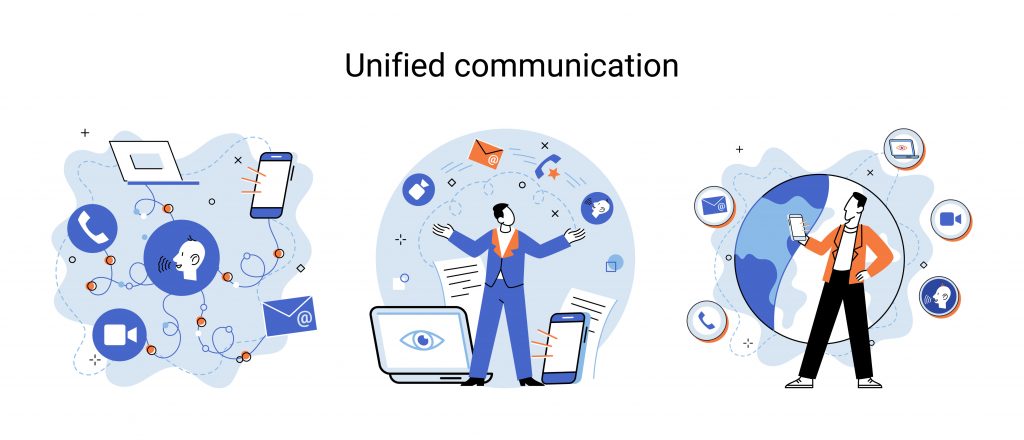Business Operations
Struggling to keep your business operations in sync? Disconnected software and siloed data can cripple productivity and growth. A unified platform for business operations is the antidote. This centralized system integrates various functionalities, eliminating the need for multiple, disconnected software programs.
That said, this guide will explore the compelling benefits of implementing a unified platform, highlighting how it can transform the way businesses operate.
Streamlined Processes
A unified platform integrates various business functions—such as human resources, finance, sales, and marketing—into a single cohesive system. Reliable solutions like Microsoft Business Applications exemplify this approach by providing a comprehensive suite that consolidates these diverse functions. This integration eliminates the need for multiple disparate software development, simplifying workflows across the organization. With all departments operating within a unified framework, redundancies are minimized, and processes become more efficient. Employees can navigate a streamlined environment where data flows seamlessly between functions, reducing the time and effort required to perform routine tasks.
Improved Data Accuracy and Consistency
In a unified platform, all business data is housed within a single system, ensuring that information is accurate and consistent across the organization. This centralization eliminates the discrepancies that often arise from using multiple databases and software tools. With a single source of truth, decision-makers can rely on precise and up-to-date information, leading to better-informed decisions. This consistency is crucial for maintaining data integrity, reducing errors, and enhancing overall trust in the data used for strategic planning and operational management.
Enhanced Collaboration
A unified platform significantly improves collaboration among employees by providing a common set of tools and access to shared information. When all team members work within the same system, communication barriers are reduced, and information is readily accessible. This interconnected environment facilitates teamwork, whether employees are in the same office or spread across different locations. Enhanced collaboration leads to faster problem-solving, greater innovation, and a more cohesive organizational culture.
Cost Savings
Maintaining multiple software systems can be financially burdensome, with costs arising from licensing fees, maintenance, and specialized IT support. A unified platform consolidates these expenses by integrating all essential functions into a single system. This consolidation not only reduces the direct costs associated with software procurement and upkeep but also lowers the indirect costs related to training and support. Businesses can achieve significant cost savings while still benefiting from a comprehensive, integrated solution that meets all their operational needs.
Scalability
Unified platforms are designed to grow alongside the business, offering scalability that can accommodate increased workloads, users, and data volumes. As an organization expands, the platform can seamlessly integrate new functionalities and support additional users without requiring a complete overhaul. This scalability ensures that the system remains efficient and effective, even as business demands evolve. By providing a flexible foundation, a unified platform allows businesses to scale operations smoothly and continue their growth trajectory without disruption.
Better Customer Experience
Integrated customer relationship management (CRM) tools within a unified platform enable businesses to deliver more personalized user experience and responsive customer service. With a holistic view of customer interactions and preferences, companies can tailor their marketing efforts and provide targeted support. This improved understanding of customer needs enhances satisfaction and loyalty. By streamlining customer service processes and ensuring consistent, high-quality interactions, a unified platform helps businesses build stronger relationships with their clients and fosters long-term customer engagement.
Enhanced Security
A unified platform typically includes robust security features designed to protect sensitive business data. Centralized security protocols ensure that data is safeguarded consistently across all functions and departments. This centralization reduces the risk of data breaches and ensures compliance with regulatory requirements, which is particularly important in industries with stringent data protection standards. By implementing comprehensive security measures within a unified platform, businesses can protect their valuable information assets and maintain the trust of their customers and stakeholders.
Increased Agility
The ability to respond quickly to market changes and opportunities is crucial for business success. A unified platform provides real-time access to data and insights, enabling faster decision-making and more agile operations. With all critical information available at their fingertips, business leaders can swiftly adapt strategies, optimize processes, and seize new opportunities. This increased agility gives businesses a competitive edge, allowing them to stay ahead of market trends and respond proactively to evolving customer needs and industry dynamics.
Improved Reporting and Analytics
Unified platforms offer advanced reporting and analytics capabilities that provide deep insights into business operations. By consolidating data from various functions, these platforms enable comprehensive analysis that can identify trends, optimize processes, and drive strategic initiatives. Enhanced reporting tools allow businesses to monitor performance, measure outcomes, and make data-driven decisions. This analytical prowess is invaluable for continuous improvement and strategic planning, helping businesses achieve their goals and maintain a competitive advantage.
User-Friendly Interface
A single, intuitive interface enhances the user experience by reducing the complexity and learning curve associated with multiple systems. Employees can quickly become proficient with the platform, leading to increased productivity and efficiency. The simplicity of a unified interface also streamlines training and onboarding processes, enabling new hires to contribute more rapidly. By providing a user-friendly environment, a unified platform empowers employees to focus on their core responsibilities without being bogged down by technical challenges or cumbersome workflows.
A unified platform isn’t just software; it’s a strategic investment in your business’s future. By streamlining operations, boosting collaboration, and offering real-time data at your fingertips, it empowers your team to work smarter, not harder. The result? A significant boost to your bottom line and a clear path towards achieving your long-term goals.








